Town Topics Nov. 22, 2017
By • November 22, 2017 0 394
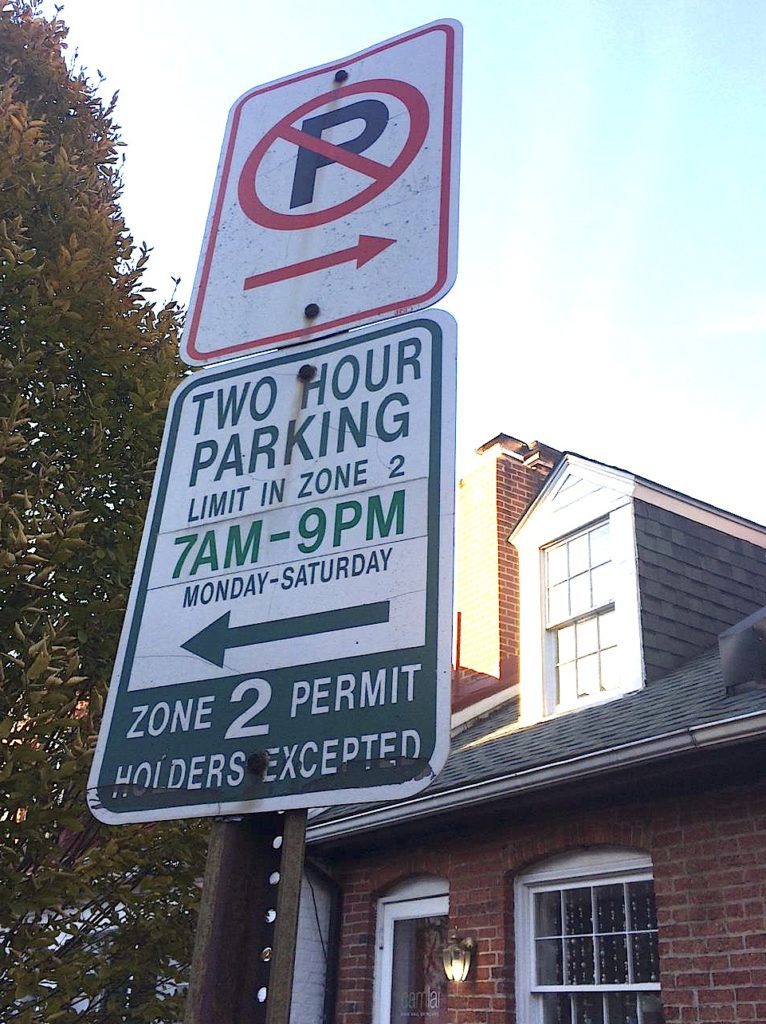
By Peggy Sands and Elizabeth Pankova
One-Side Resident Parking Mulled
It’s an old new idea: restricting parking on one side of certain D.C. streets to area residents only. The so-called “50-percent plan” has come up again recently at meetings of the Georgetown Parking Working Group and may be considered at the Dec. 4 Advisory Neighborhood Commission meeting. Commissioners and others are already lining up on the pro and con sides , although there are no details, no plans and no proposal — as yet.
But parking is a perennial and growing problem in Georgetown, and throughout D.C. for that matter.
Ex-Resident Sues Georgetown Retirement Home
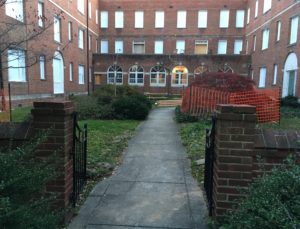
Construction is underway at the former Georgetown retirement residences at 2512 Q St. NW. Photo by Richard Selden.
Charging misleading practices amounting to a violation of tenant and consumer rights, as well as financial injury, Beatrice Alexander, a former resident of the Georgetown, a retirement residence at 2612 Q St. NW that closed last year, has filed a lawsuit against the Holladay Corporation, according to a letter released to the press Nov. 16. Holladay was the facility’s owner and operator.
But just a few months later, the more than 100 senior residents who had moved out were informed by letter that the Georgetown would be converted into luxury apartments and cease to operate as a senior living facility. The letter “subsequently implied that re-admittance of former residents would not be permitted as originally promised,” according to a spokesperson for the plaintiff.
Bill Returns to Hilltop
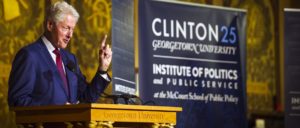
Bill Clinton at Gaston Hall Nov. 6. Courtesy Georgetown University.
Bill Clinton, 42nd president of the United States and Georgetown University alumnus, came back to his alma mater Nov. 6 to give a talk to mark the 25th anniversary of his election in 1992. Clinton reflected on his time at Georgetown and on his experience as the country’s leader, offering remarks on his vision for the future of American politics.
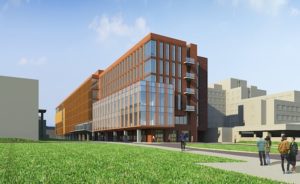
Rendering of planned Medstar GU Hospital surgical pavillion. Courtesy MedStar.
Medstar Georgetown University Hospital has announced plans to build a new 477,000-square-foot surgical pavilion, the construction of which will start in January. The pavilion will hold 156 private rooms as well as additional operating rooms and a helicopter pad. The project also aims to improve the traffic situation at the Reservoir Road entry to the university by moving parking underground and restructuring the entrance. However, during construction much of the road will be blocked off, temporarily worsening the traffic on Reservoir Road and surrounding streets.

Hillary Clinton, former secretary of state and former presidential candidate. Courtesy State Department.
Four days before her husband’s visit to Georgetown University, on Nov. 2, Hillary Clinton received a Democratic Woman of the Year Award at the Wo man’s National Democratic Club near Dupont Circle. To a packed room of at times tearful supporters, Clinton was interviewed by Sen. Diane Feinstein of California .
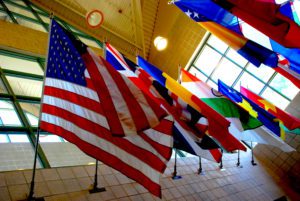
International student enrollment at U.S. universities has increased.
A record 1,078,822 international students — an overall rise of 3.4 percent — were registered at accredited universities and colleges in the United States in 2016 – 2017, the International Institute of Education announced at the Nov. 13 release of its annual Open Doors report. Half came from two countries, China and India, the latter up by 12.3 percent over the prior year.
The number of “new” students — that is, international students arriving for the first time — declined an average of 7 percent. “It’s caused by a mix of factors,” said IIE research experts Peggy Blumenthal, Christine Farrugia and Rajika Bhandari, including increased competition from other English-speaking countries like the U.K. and Australia, which offer exchange programs at much less cost. “We’re also hearing more concerns about personal safety and the Trump administration policies such as the travel ban.”
Reforms that Sen. Amy Klobuchar (D-Minnesota ), Sen. Kirsten Gillibrand (D-New York ), Rep. Jackie Speier (D-California) and Rep. Barbara Comstock (R-Virginia) are pushing, however, deal mainly with reforming the process of harassment com plaints and the treatment of accusers. They would eliminate a current req uirement that the accuser submit to mediation and counseling before filing a complaint, even as the accuser continues to work for the alleged harasser.
- Be extra careful of the male lawmakers who sleep in their offices — they can be trouble.
- Avoid finding yourself alone with a congressman or senator in elevators, late-night meetings or events where alcohol is flowing.
- Think twice before speaking out about sexual harassment from a boss — it could cost you your career.
- Contribute to the “creep list. ” (This is an informal roster, passed along by word-of-mouth, consisting of the male members most notorious for inappropriate behavior, ranging from making sexually suggestive comments or gestures to seeking physical relations with younger employees and interns.)
WHO Designates D.C. as ‘Age Friendly’ City
On Nov. 17, officials from the World Health Organization in Geneva and from the AARP’s international programs division recognized Washington, D.C., as a member of the Global Network of Age Friendly Cities and Communities — only the third city in the United States to be so recognized.
“We want D.C. to be a place where people never want to leave,” said HyeSook Chung, deputy mayor for health and human services and chair of D.C. ’s task force on age-friendly D .C. To that end, volunteer-led teams conducted block-by-block “livability” surveys of adults about their experience growing older in the District. They came up with 10 focus areas for projects, according to Laura Newland, executive director of D.C.’s Office on Aging.
Other age-friendly factors: Ninety-seven percent of D.C. residents live within a ten-minute walk of a park. Over the past five years, 14,147 trees have been planted, 38 percent of which provide canopy cover. Three hundred police detectives and 200 judges have been trained in elder abuse. And D.C. has been ranked the second-fittest city in America, with 2,900 older residents attending wellness centers.
Heating Plant Condo Design on Hold — Again
“In case you haven’t heard already, the Historic Preservation Review Board decided to designate the West Heating Plant as a landmark,” ANC 2E Commissioner Jim Wilcox wrote Nov. 4. “ The Board continued its hearing until Nov. 16 to take further statements, before addressing design and demolition of the building.”

